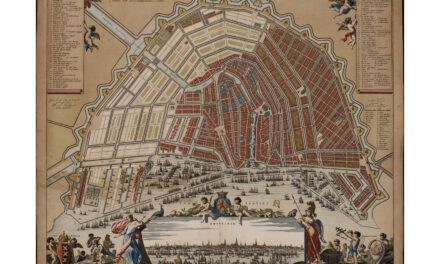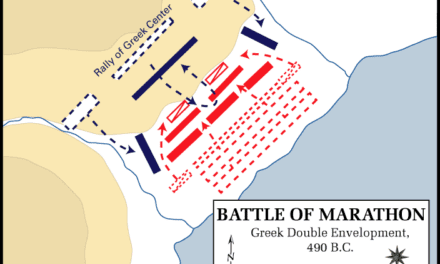History Guild General History Quiz 132
See how your history knowledge stacks up!
Want to know more about any of the questions? Once you’ve finished the quiz click here to learn more.
Have an idea for a question? Suggest it here and we’ll include it in a future quiz!
The stories behind the questions
1. Which type of tank is this?

Mark V – A British tank, the evolution of their earlier tank designs. It was first deployed in July 1918 at the Battle of Hamel, where they supported Australian troops. It was then used at the Battle of Amiens, and finally on the Hindenburg Line during the closing months of World War I. It had a maximum speed of only 8km/h, but was largely successful in it’s role of infantry support during an attack.
2. What was the tallest man-made structure in the world in 1050 CE?
Great Pyramid at Giza – 147m. Completed around 2570 BCE, it was the tallest man-made structure in the world for over 3,800 years, until Lincoln Cathedral was built in 1311.
St Paul’s Cathedral – Old St Paul’s Cathedral, which was later destroyed by the Great Fire of London in 1666, wasn’t completed until 1314. It was then 149m tall.
Tower of Jericho – 8.5m. Built around 8000 BCE it is considered the world’s first stone building.
Strasbourg Cathedral – Completed in 1439, it was then 142m.
3. When was slavery in the British Empire outlawed?
1834 – Between 1662 and 1807 British and British colonial ships purchased an estimated 3,415,500 Africans. This was eclipsed in scale only by the Portuguese. In 1807, British parliament passed the Abolition of the Slave Trade Act, effective throughout the British empire. It wasn’t until 1834 that slavery was abolished in British colonies through the Slavery Abolition Act, giving all slaves in the British empire their freedom. This also involved paying massive compensation to the slave owners. The slaves did not receive compensation.
4. What was the last city conquered during the Reconquista?
Granada – Learn more about the Reconquista.
5. Which country did Timor Leste (East Timor) gain independence from in 1975?
Portugal – After earlier trading links, Portugal established the colony of Portuguese Timor in 1769. Following the 1974 Portuguese revolution, Portugal effectively abandoned its colony in Timor and civil war between East Timorese political parties broke out in 1975. Immediately after declaring independence it was invaded by Indonesia, who occupied the country until 1999, when it finally regained its independence.
6. The Sacred Band were the elite unit of which ancient power?
Thebes – An elite unit of 150 pairs of male lovers which formed the elite force of the Theban army in the 4th century BC. It rose to prominence with its crucial role in the Battle of Leuctra in 371 BC. It was annihilated by Philip II of Macedon in the Battle of Chaeronea in 338 BC.
7. Where was the ‘Oriental Maginot Line’?
Hong Kong – Known as the ‘Gin Drinkers Line‘, this defensive structure was overcome by determined Japanese attack in December 1941.
8. The current Papal seat is the Vatican. Which other places have been Papal seats in the past?
Avignon – Between 1309 to 1376 seven successive popes resided in Avignon rather than in Rome. The situation arose from the conflict between the papacy and the French crown. This conflict saw the death of Pope Boniface VIII after his arrest and maltreatment by Philip IV of France in 1303. In 1309 Pope Clement V moved his court to Avignon, where it remained until Pope Gregory XI returned to Rome in 1376.
However, there were then two Avignon based Antipopes who also claimed to be the true Pope in the wake of Gregory XI’s return to Rome. They were resident in Avignon until 1403.
9. When did Norse explorers establish settlements on Greenland?
985 – Norse explorers from Iceland first settled Greenland. According to the Sagas of the Icelanders Erik the Red, who had been banished from Iceland for manslaughter, explored the uninhabited southwestern coast of Greenland during the three years of his banishment. He made plans to entice settlers to the area, naming it Greenland on the assumption that “people would be more eager to go there because the land had a good name”.
The two settlements grew to a size of around 2,000 to 3,000 people and lasted until the late 1400’s, when the settlements collapsed. This period of settlement is that basis by which Denmark asserted their sovereignty over the island.
10. Where did the Mau Mau fight against British rule?
Kenya – The Kenya Land and Freedom Army (KLFA), also known as the Mau Mau, fought an insurgency against British rule in Kenya from 1952-1960. The Mau Mau failed to capture widespread public support. There is continued debate as to what effect the Mau Mau had on Kenya gaining independence in 1963. The Kenyan government continued to fight the Mau Mau after independence, with the Kenyan defence minister saying in 1965 “They are now outlaws, who will be pursued and brought to punishment. They must be outlawed as well in the minds of all the people of Kenya.”



